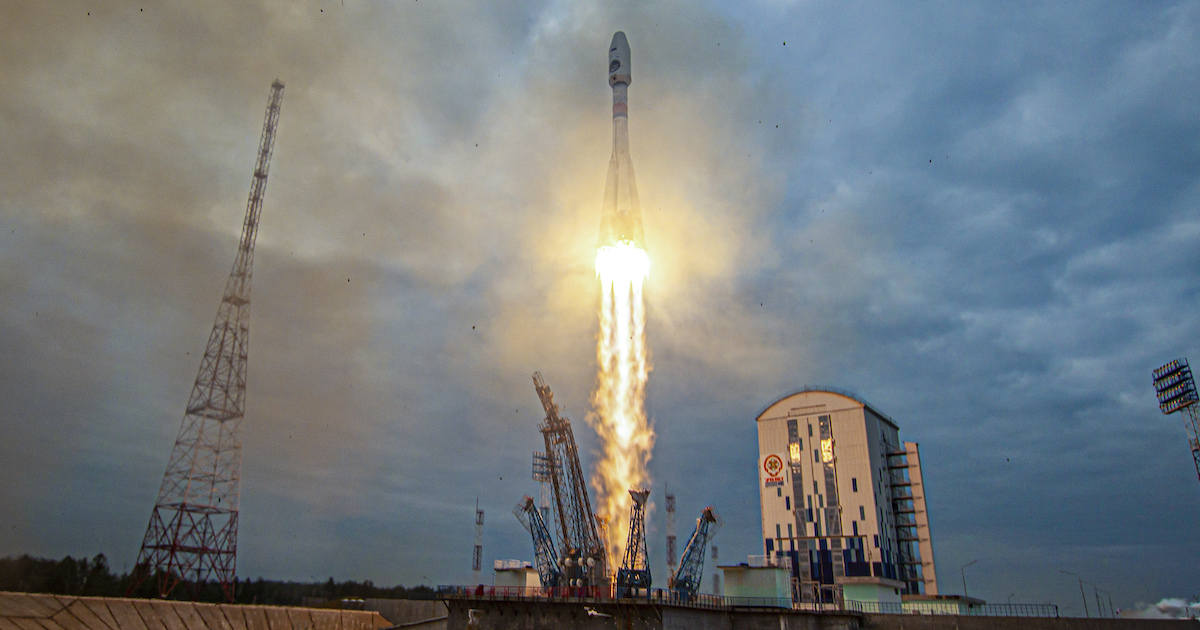In the early hours of Friday, the Russian space mission Luna-25 took off, the purpose of which is to bring a probe to the lunar south pole for exploration and research activities. Luna-25 is the first Russian lunar mission in almost fifty years: the previous one, Luna-24, was launched in 1976, when the “space race” between the United States and the Soviet Union was still underway. By naming the new mission Luna-25, the Russian government of President Vladimir Putin wanted to underline the continuity with the rather important season of Soviet space exploration and try to demonstrate that Russia has once again become a country capable of operating in space.
Luna-25 took off from Vostochny, in the far east of Russia and not far from the Chinese border. She took off on a Soyuz rocket, which has been in use since Soviet times and has been repeatedly upgraded. According to Roscosmos, the Russian space agency, the mission is expected to enter lunar orbit on August 16 and make a first attempt at the moon landing on the 21st. If the moon landing is successful, Luna-25 will remain active on the lunar sound for about a year. to conduct tests and experiments. Roscosmos has two main objectives: to test its technologies and instruments in view of future missions and to take and analyze soil and ice samples from the lunar south pole.
The lunar south pole has been little explored and no spacecraft has ever landed in this region because missions so far have been concentrated in the equatorial area. It is considered interesting due to the presence of water, in the form of ice, which in the future could be exploited for maintaining a base with humans.
Luna-25 will bring a “lander” to the moon, i.e. a probe that will remain fixed where it landed. The mission, on the other hand, does not include a “rover” (an automatic vehicle capable of moving on the lunar surface) or even an “orbiter”, i.e. a vehicle that orbits the moon to collect data from above.
Luna-25 is aiming quite clearly to be the first to make a successful moon landing at the lunar south pole. Russia’s hope is to be able to beat the Indian Chandrayaan-3 mission, which left a month ago (July 14) but which will take longer to reach the Moon because it took a longer route that requires less effort of fuel. Luna-25 is expected to land on the moon on Aug. 21, while Chandrayaan-3 is estimated to land between Aug. 21 and 23.
Luna-25 is in direct continuity with the Soviet lunar missions not only in name. The mission’s design rather closely resembles the Soviet designs of 50 years ago: “The architecture of the lander is very similar to the ones the Soviet Union used for moon landings in the 1970s, but smaller,” he told the New York Times Anatoly Zak, a Russian space industry expert.
For the Russian government of Vladimir Putin, Luna-25 also has an evident political and symbolic value, which was further amplified with the start of the war in Ukraine. For Russia, and especially for an authoritarian and nationalist leader like Putin, the Soviet Union’s space successes are one of the most glorious moments in Russian history. The so-called “Space Race”, i.e. that period of technological competition that led the United States and the Soviet Union to achieve exceptional successes in the field of space exploration, is still remembered in Russia today as one of the moments of maximum power and influence of the country .
After the collapse of the Soviet Union in the early 1990s, the Russian space program also fell into serious crisis. Russia continued to maintain Soviet-era infrastructure and use it for many major operations. For example, for a few years after the end of the American space shuttle program, the Russian Soyuz rocket was the only means by which it was possible to send humans into orbit. But the largest and most ambitious missions were virtually blocked. For this reason, bringing Russia back into space has always been one of the priorities of Vladimir Putin’s great national restoration plan.
The need to show internationally that Russia is a country capable of launching ambitious space missions has become more urgent after the Russian invasion of Ukraine, when Russia was hit by massive Western sanctions which have, among other things, the goal of harming its technology sector by depriving it of access to Western technologies and components. The war also almost completely canceled the collaborative projects between the Russian and Western space agencies.
With Luna-25, Russia is trying to demonstrate that it is immune to sanctions, and capable of launching a lunar mission despite Western attempts to isolate it and hit it economically. In reality, missions like Luna-25 require many years of preparation, and the sanctions imposed just over a year ago hardly affected the mission heavily. However, it is not clear if and how much the sanctions will affect any future missions. Russia hopes to launch a Luna-26 mission, which is expected to be an orbiter, and Luna-27, which is expected to consist of a larger and more developed lander than the current mission, in the coming years.
